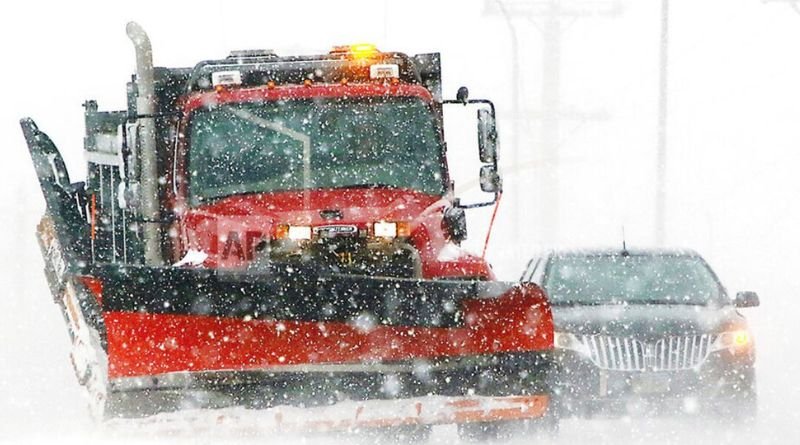Summary
A Snow Day Calculator is an innovative tool designed to help students, parents, and teachers predict when schools will close due to inclement weather. Snow days, which typically occur during the winter months, can disrupt normal routines and cause challenges for families and educational institutions. The unpredictability of weather patterns makes it difficult to know in advance whether a snow day will be called. This is where a Snow Day Calculator can be helpful. By factoring in various criteria such as snowfall amounts, temperature, wind chill, and other weather conditions, these calculators provide an estimate of the likelihood that schools will be closed on a particular day.
Snow day calculators use historical data, weather forecasts, and sometimes even localized school district rules to make predictions. They take into account the specific weather conditions necessary for a snow day, which can vary depending on location. For example, a heavy snowstorm may be enough to close schools in some regions, while other areas may require a combination of factors, such as freezing temperatures, icy conditions, and significant snow accumulation.
This tool is particularly useful for parents and students who want to plan ahead and avoid the uncertainty of waiting for official school closure announcements. By understanding the factors that contribute to snow day decisions, users can make informed predictions and prepare for potential school closures. In this article, we will explore how a Snow Day Calculator works, the factors that influence school closures, and how to use the calculator effectively to predict snow days.
What is a Snow Day Calculator?
A Snow Day Calculator is an online tool designed to estimate the likelihood of school closures based on weather conditions. While it can never offer a guarantee, the calculator can provide a prediction based on historical weather data, forecast information, and specific school district policies regarding weather-related closures. Many calculators also allow users to input certain variables, such as the amount of expected snowfall, temperature, and current weather conditions, to produce a tailored prediction for their location.
The tool works by considering how schools in a particular area have historically responded to similar weather patterns. For instance, if a region tends to close schools after a snowfall of more than six inches, the calculator will factor that in. Some calculators are more advanced, incorporating real-time weather data and predictive models to refine the forecast and improve the accuracy of their predictions.
While snow days themselves are unpredictable—sometimes even the best predictions can be off—the Snow Day Calculator can provide insight into the factors that drive closure decisions, making it a valuable tool for those trying to plan ahead during the winter months.
Key Factors That Influence Snow Day Decisions
The accuracy of a Snow Day Calculator depends heavily on understanding the factors that contribute to a school closure decision. These factors may vary from one school district to another, as policies are often shaped by local climates, geography, and infrastructure. Some of the key factors include:
1. Amount of Snowfall
The primary factor most people think of when predicting a snow day is the amount of snow expected. However, the amount of snow alone doesn’t always determine whether schools will close. Some school districts may close when a certain number of inches of snow accumulate, while others might not close until more severe conditions occur.
2. Temperature
Freezing temperatures can create hazardous road conditions, particularly if snow accumulates and then freezes overnight. If temperatures dip below freezing (32°F or 0°C), icy roads become a serious concern for school buses and other vehicles. In some areas, even if snow accumulation is light, dangerously low temperatures may still trigger school closures.
3. Wind Chill
Wind chill plays a critical role in snow day predictions, especially in areas prone to extreme cold. Wind chill is the apparent temperature felt on exposed skin due to the wind. A strong wind combined with low temperatures can create dangerous conditions, making it unsafe for students to wait for buses or walk to school. Many school districts will close schools or delay opening if the wind chill is dangerously low.
4. Road Conditions
For many schools, particularly those located in rural areas or regions where snow and ice are less common, the condition of the roads is a key factor in determining whether to cancel classes. If the roads are too icy or slippery for buses to safely transport students, schools may close, regardless of how much snow has fallen.
5. School District Policy
Each school district has its own policy regarding when to close or delay classes due to weather conditions. These policies are often based on local norms, historical data, and the availability of resources such as snowplows or salt trucks. Some districts may opt for delayed openings rather than full closures, giving road crews more time to clear roads before buses take students to school.
6. Local Infrastructure and Resources
Areas with better resources for dealing with snow and ice may be less likely to close schools, as they have the infrastructure to handle adverse weather conditions. For example, cities with large fleets of snowplows may be able to clear roads faster than rural areas, making snow days less likely.
7. Timing of the Snowstorm
The timing of the snowstorm can also play a role. If heavy snow begins in the early morning hours, there may not be enough time for road crews to clear streets before students need to leave for school. In contrast, a snowstorm that starts later in the day might lead to an early dismissal, rather than a full cancellation.
How Does a Snow Day Calculator Work?
A Snow Day Calculator works by taking various data inputs, such as weather forecasts, historical weather patterns, and local school district policies, and using that information to generate a prediction about whether schools will close. Here’s a breakdown of how the calculator typically works:
- Input Weather Data: The calculator asks for inputs like expected snowfall, temperature, wind chill, and timing of the storm. This data can be manually entered by the user or automatically pulled from weather forecasts.
- Historical Data: Many calculators take historical weather data into account, considering how previous snowstorms with similar conditions affected school closures in the area.
- School District Policies: Some calculators use specific school district policies to predict closures. For example, if a district typically closes schools after 4 inches of snow or below-freezing temperatures, the calculator will factor that in when making predictions.
- Predictions: The calculator then generates a prediction based on the available data. The prediction may offer a probability of a snow day, such as a 70% chance that schools will close, or a more definitive answer, such as “likely snow day” or “school is expected to remain open.”
- Real-Time Updates: Some snow day calculators also provide real-time updates, pulling in the latest weather forecasts and adjusting predictions accordingly. This can be particularly useful when a snowstorm is already underway.
Benefits of Using a Snow Day Calculator
While snow day closures are never guaranteed, the Snow Day Calculator offers several advantages for those who want to stay informed about the possibility of a snow day:
1. Advance Planning
A snow day calculator helps parents, students, and teachers plan ahead. By providing early estimates of the likelihood of a snow day, individuals can make alternative plans for childcare, travel, or work schedules.
2. Reducing Uncertainty
For parents, the uncertainty of waiting for official school closure announcements can be stressful. A Snow Day Calculator can help reduce this uncertainty by providing an informed prediction.
3. Optimizing Time Management
Knowing in advance whether school is likely to be closed allows students and teachers to manage their time better, whether it’s for studying, work, or taking advantage of the day off.
4. Weather Awareness
By inputting weather data into the calculator, users gain a better understanding of how various weather factors, like snowfall amounts and wind chill, affect school closures. This helps build awareness about the broader impacts of weather conditions.
Popular Snow Day Calculators
Several snow day calculators are available online, each with its own features and capabilities. Some of the most popular calculators include:
- Snow Day Predictor This tool allows users to enter their location and current weather conditions to get an estimate of the likelihood of school closures in their area.
- School Closures Snow Day Calculator This calculator provides a detailed analysis of local weather, school district policies, and other contributing factors to give a prediction for specific school districts.
- AccuWeather Snow Day Forecast Tool AccuWeather offers a snow day forecast tool that incorporates its weather forecasts along with historical data for specific areas.
- Customizable Calculators Some websites and apps allow users to create customized calculators that consider local school district rules and unique weather patterns in their area.
In summary, a Snow Day Calculator is a useful tool for predicting school closures during winter storms. By considering factors such as snowfall, temperature, road conditions, and district policies, these calculators provide valuable predictions that can help families and students plan ahead. Although they can’t guarantee school closures, these tools reduce uncertainty and offer a better understanding of the variables that contribute to snow day decisions. Whether you’re hoping for a snow day or just need to plan for one, the Snow Day Calculator can help you stay informed and prepared.






